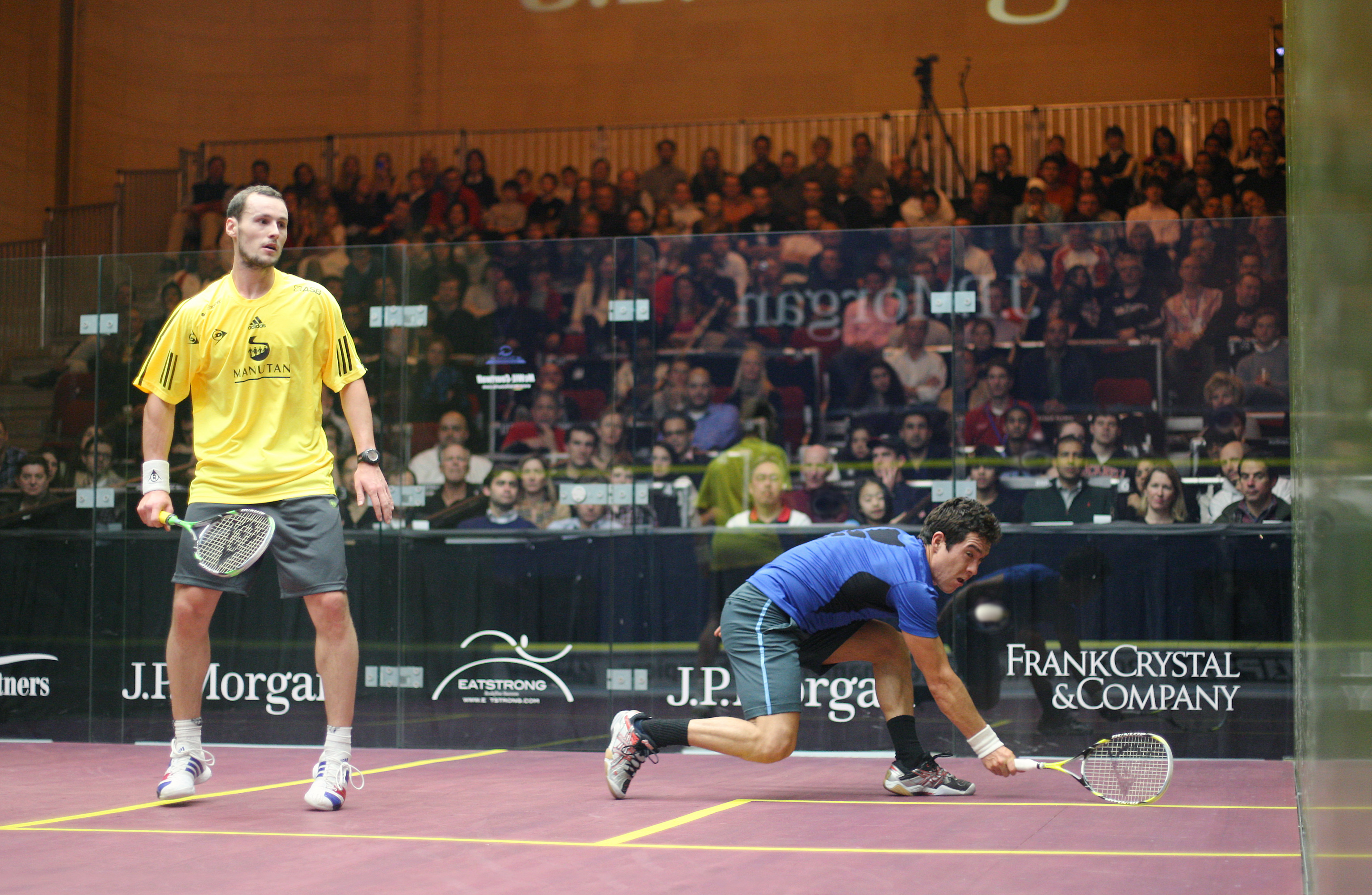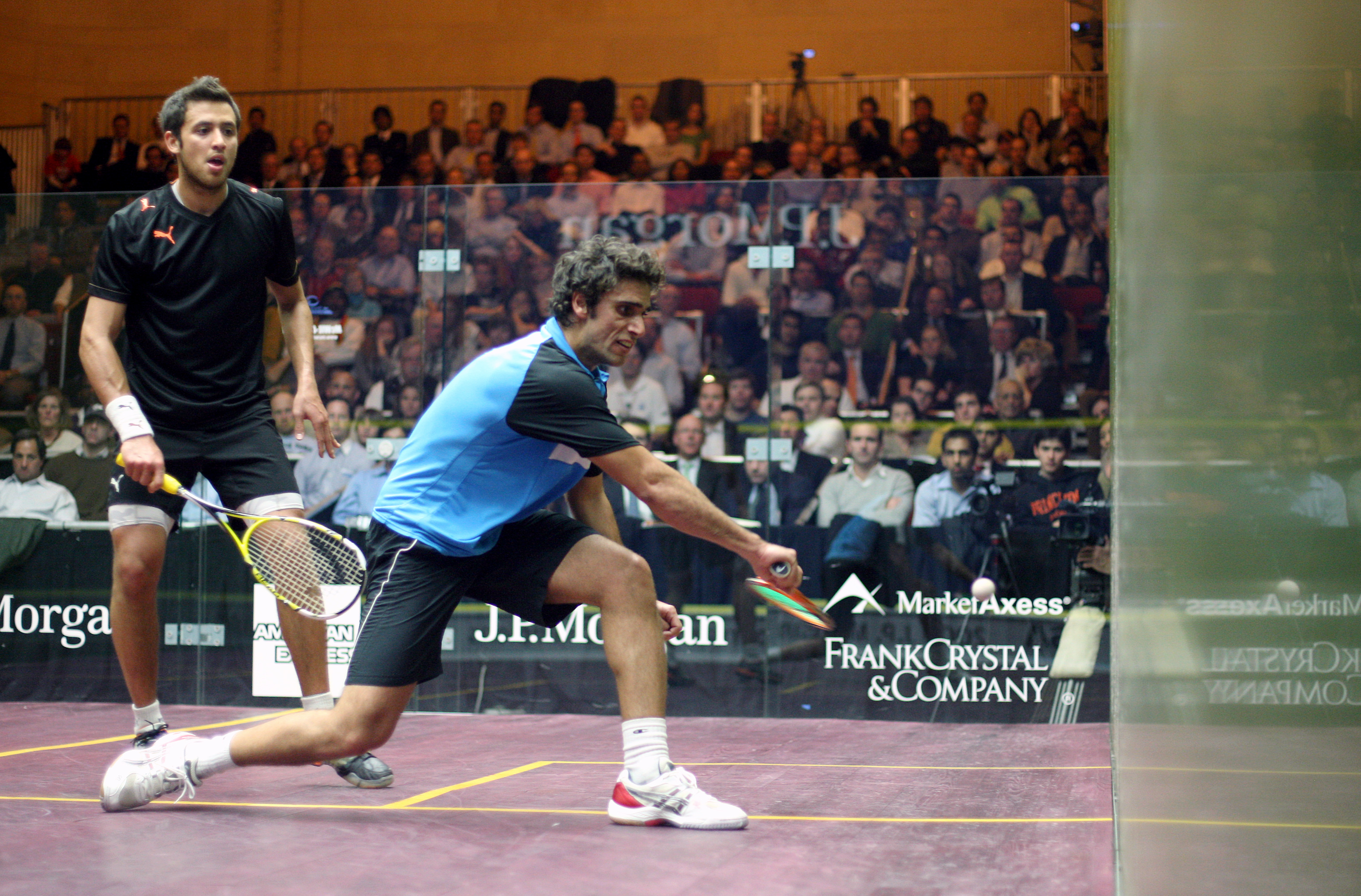By Richard Millman, Owner—Westchester Squash
The value of a boast has to be considered in light of the situation in which it is played. Boasts (or angles—shots played off of two or more walls, usually with a sidewall first) can be wonderful tools with which to work your opponent. However, as the ball collides with walls, the speed of the ball obviously decreases, offering the opponent more time to get into position to both recover for the next shot and to play the ball.
Defensively, boasts should only be played as an absolute last resort. In the back corners, if you have room to play a boast then you almost certainly have room to play a straight drop from the back of the court, which is a far better option. Try not to play three wall boasts from the back corner—this option will simply leave you miles out of position with your opponent in control of the game.
So when to play a boast and what kind of boast to play?
A boast is a weapon to be used when you aren’t forced to play it. Get into position early and plant the seed in your opponent’s mind that you can play deep. In fact, it would be a good idea to create the situation that you intend to boast from later early in the match and not boast the first few times. Then as you sense that your opponent is a little late into position, or is hanging back, play your attacking boast.
Working Boasts
When played from mid-court or the back court, you should try and play a working boast. Working boasts are aimed to strike the middle of the front wall and then to run toward the side wall, bouncing twice before gaining the opposing side wall.
The speed you hit the boast with must be determined by how much time you need to get into position for the next phase of the rally (your opponent’s next shot), how far your opponent is out of position and how fast your opponent is to the front of the court.
To make sure you are in position and to give the ball sufficient power to make it to its destination, make sure you use your legs both to move off the ball as you hit it and to supply the energy to the shot. Move rhythmically with your own shot as you hit it, so that you are traveling with the ball as it progresses to the front wall, thereby putting you into position, waiting for your opponent’s next shot long before they can execute it. If you aren’t going to be in position before they can play their next shot, then you shouldn’t be playing a boast.

Volley Boasts
Volley boasts are a great short alternative to a drop volley, if you have managed to pin your opponent deep in the back corner and you are intercepting their attempt to play long, before they are back in position.
Again, don’t show your hand too early. Volley the ball deep the first few times you get this opportunity to set the idea in your opponent’s mind that they have to cover the back court (it’s also much more physically demanding for an opponent that is trying to recover to have to stop and turn back to the back corner). Once you have established the idea that you are going to play long then you can try the drop volley; and then, after a few drop volleys, stick in the volley boast as a wrong footing alternative. The target, once again, is the middle of the front wall and the same parameter as you used for the working boast for pace and movement should be used.
A great drill to practice this shot is: Cross-court lob, straight volley to length, boast. This gives you a great opportunity to hit the volley boast and to try and follow it up with a volley to length—a very good habit to form.
Reverse Angles

Reverse angles (a ball struck to the opposite side wall and then the front wall) can alternately be appallingly bad choices or outrageous and spectacular game changers.
Again, the same rules apply: don’t play this shot unless you are going to get yourself into position for your opponent’s potential next shot well before they can strike it and only if your opponent is out of position before you play it.
In older master’s level squash it can be a great shot because as we get older, we turn less well and therefore it is tough to retrieve.
One of the best professional exponents of this shot that I have ever seen in my nearly forty years in the game was former US Champion and world top 30 player Damian Walker. His ability in the front forehand corner, to persuade players of national and international class, that he was about to play a cross-court, only to then play a severe reverse angle right across the court back to almost where he played the ball from, left many a top player red faced (I have had the misfortune to suffer this myself!).
However, he followed all the rules. He knew where he needed to be by the time a potential next shot would be played and he had tremendous awareness of his opponent’s position. Most important of all, he used this shot judiciously and sparingly, having created the idea in the opponent’s mind that he was going to play a deep cross-court.
Trickle Boasts
Trickle boasts are boasts played in the front corners, running the ball around the corner as a wrong-footing-exercise-alternative to either a straight drive or a drop shot.
The important thing is to get into position early, with plenty of time for options. Then hold the ball for as long as you can and make sure you move into position for the next shot as you execute the Trickle boast.
You should play this only when you have surprised your opponent by how early you have arrived and when they are a little late. If you are late and they are early, a trickle boast will simple leave you out of position as they propel you into the back corner, leaving you to run the diagonal.
It is a great shot to have in the arsenal, but follow the rules that I have already mentioned for other boasts.





